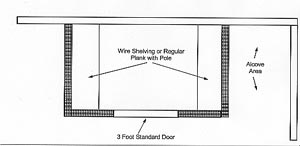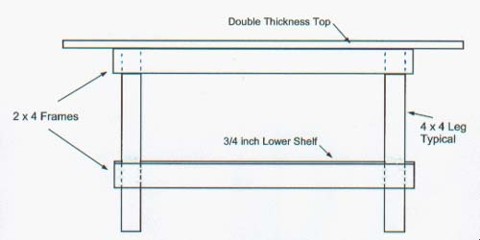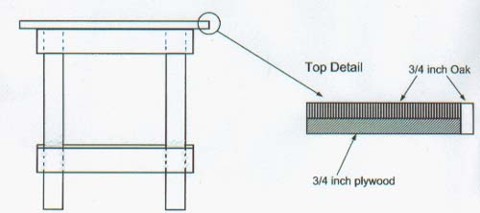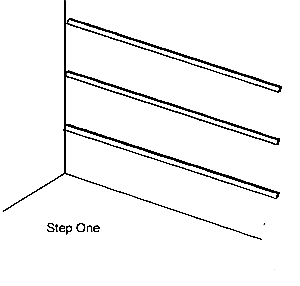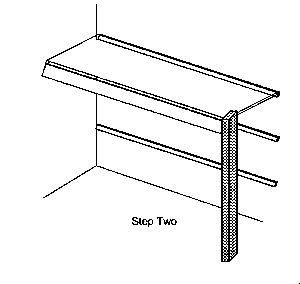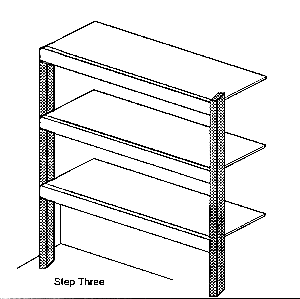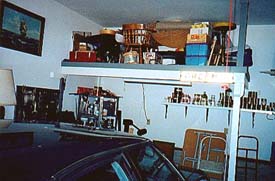Closet Plans
Closet building is a great project for a beginner. It takes minimal carpentry, drywall and painting skills to accomplish this project. What's more, if you use quick setting joint compound, you can actually complete a simple closet project in just two days. I have personally completed jobs like this in a short amount of time, but everything went just right. With proper planning, you can do it too!
Think Before You Act
The plan for your closet can be drawn on a napkin or the back of a paper bag. It doesn't have to be sophisticated. What you are looking for is accuracy in your dimensions.
Use your existing closets as a guide. Are they deep enough or possibly too deep? Are there tough to reach corners because the door is too small? Is there wasted space inside the closet because it is too narrow and too tall inside? In other words, determine what would be the perfect interior dimensions for your perfect closet! Using a tape measure, you can accomplish this planning task in about 15 minutes.
Full Height Walls
If you have decided to go with floor to ceiling walls you need to know something. You can't build these walls on the ground/floor and then tilt them up into place. The walls will get pinched when you get them close to the ceiling. The only time you can do this is when the ceiling plaster or drywall is not in place. You can then tilt the walls up and tuck the top of the wall between two ceiling joists. Once the wall is straight up and down you can then slide it into position under the floor joists.
Most of you will not have this option. You need to build the walls in place, one piece at a time. Be sure that you check each wall stud for a crown. A crown is a hump in the stud that you see when you look down the 1.5 wide edge of a stud. If the crowns do not all point or face the same direction, your wall(s) will be wiggly once drywalled.
Blocking
If you want to avoid the use of strong language when you are in the last stages of this project - installing the shelves and clothes hanging poles - you better think about installing blocking in the walls before you hang drywall.
Years ago carpenters routinely installed solid scraps of 2x4 material within walls. These blocks allow the screws for just about any fixture to find solid material instead of hollow drywall cavities. All you need to do is calculate where shelves, poles and any other bracket might be placed. Then use 2x4 material placed on its side in between wall studs to create your blocks. Turning them on their side gives you a 3.5 inch wide target area. If you have larger scraps such as 2x6's or 2x8's then you will end up with a larger target.
The Door Wall
If this is your first wall and door hanging project, you need to take a few precautions to avoid additional cursing. The rough opening you create for the door must be plumb, square AND in the same plane. It is the "same plane" aspect that most people forget. If the rough opening for the door is twisted (NOT in the same plane) then you will have a nightmare trying to get your door installed.
Here is how to get the door in the same plane. The bottom plate of the door wall MUST be continuous. In other words install the entire bottom plate as you start building the walls. Be sure to use perfectly straight top and bottom plates, and make sure that they are directly over one another. Use a plumb bob for this alignment task.
Door rough openings usually have a king stud that runs continuous between the top and bottom plate on each side of the opening. You then add the flat stud to create the rough head of the door. Then you pack or add cut cripple studs that go next to the king stud beneath the rough horizontal header. It is vitally important that the king studs on each side (MOST definitely the hinge side of the door!) of the rough opening are crown and bow free studs. This means that they are select grade - perfectly straight. If you do all of these things and install the king studs plumb, your finish door installation will be a breeze. Oh, yes, after the drywall is installed, use a hand saw or reciprocating saw to cut out the exposed portion of the bottom plate that you still see!
Closet Lighting
Thinking about installing lights in your closet? Most rookies wire up for an exposed pull chain bulb fixture. Want to know how much of a mistake this is? Just go to your local firehouse and talk with the fire fighters. They will tell you that people leave these lights on, some clothes fall against them and POOF, smoke/fire! Follow the most recent National Electric Code requirements and install lights according to code.
Related Articles: Closet Organizers, Shoe Storage, Adding Closet Storage Space, Two Closet Plans - Materials
Column B241

